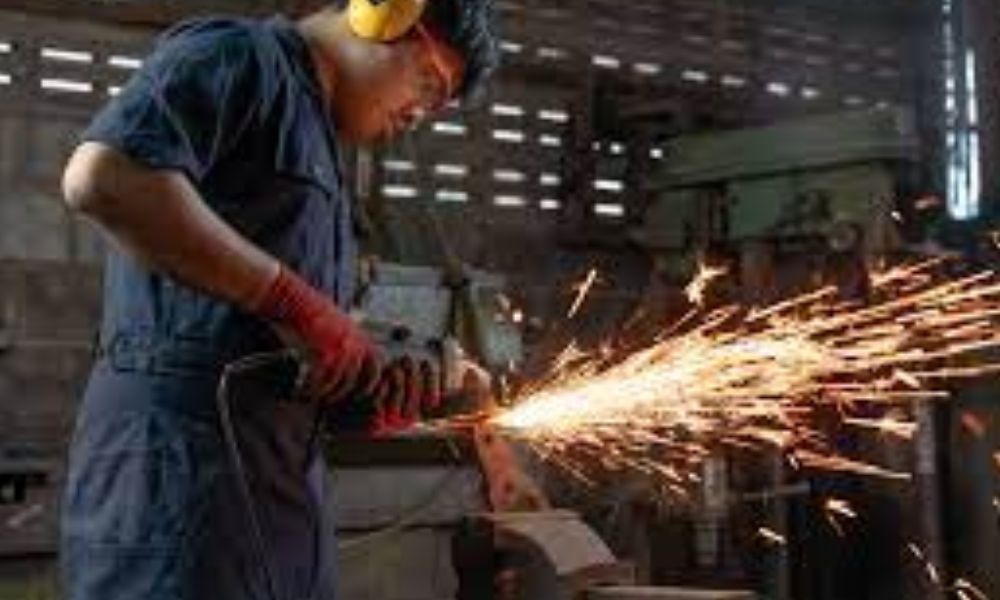Metal fabrication is a versatile and indispensable process in commercial construction and design. It involves shaping, cutting, and assembling metal materials to create custom components and structures. In this article, we’ll explore the various metal fabrication techniques used in commercial projects, highlighting their importance in achieving tailored and functional solutions.
The Art of Metal Cutting
Metal cutting is a fundamental process in metal fabrication, and several techniques are employed for precise and clean cuts. Traditional methods include sawing and shearing, while modern methods often utilize laser cutting or plasma cutting for intricate designs and high-speed precision. The choice of cutting technique depends on the type of metal used and the specific requirements of the project.
Bending and Shaping Metal
To achieve desired shapes and angles, metal pieces are bent and shaped through techniques like press brake forming and roll forming. These methods allow for the creation of structural components, curved surfaces, and custom profiles that suit the unique needs of commercial projects. Precision and accuracy are essential in these processes to ensure that the metal pieces fit seamlessly into the design.
Welding: Fusing Metals Together
Welding is a critical technique that involves the fusion of metal components by melting them at their joints. It creates strong and permanent connections, making it a cornerstone of metal fabrication. Various welding methods are employed, such as MIG (Metal Inert Gas) welding, TIG (Tungsten Inert Gas) welding, and stick welding, each offering different benefits and suitability for specific materials and applications.
Metal Stamping for Precision Parts
Metal stamping is used to create precision parts with intricate details. This technique involves forming flat metal sheets into desired shapes and patterns using a stamping press. It is widely used in the production of commercial components such as brackets, connectors, and fasteners. Metal stamping is known for its cost-effectiveness in high-volume manufacturing.
CNC Machining
CNC (Computer Numerical Control) machining has revolutionized metal fabrication by combining precision and automation. CNC machines are programmed to perform cutting, drilling, and milling tasks with incredible accuracy. This technology is used in commercial projects to create custom parts and prototypes, ensuring consistency and quality.
Stainless Steel Sheet
Stainless steel is a favored material in metal fabrication for its corrosion resistance and durability. A stainless steel sheet is particularly versatile, as they can be cut, bent, and formed to meet specific project requirements. From commercial kitchen countertops to exterior cladding, stainless steel sheets offer a sleek and hygienic appearance, making them a popular choice in various industries.
Finishing and Surface Treatment
Metal fabrication doesn’t stop at assembly; it often includes finishing and surface treatment processes. These processes can enhance the appearance, protect against corrosion, and provide additional functionalities. Common finishing methods include powder coating, painting, anodizing, and electroplating. The choice of finish depends on factors like aesthetics, environmental conditions, and the intended use of the fabricated metal components.
Quality Control and Inspection
Quality control and inspection are integral aspects of metal fabrication. Ensuring that the fabricated components meet the specified tolerances, standards, and safety requirements is paramount. Inspection methods may include dimensional checks, weld inspections, material testing, and non-destructive testing to guarantee the quality of the final product.
Metal fabrication is the art of turning creative designs and engineering concepts into tangible commercial realities. Whether you’re working on a complex architectural project, custom machinery, or a specific structural component, the array of techniques available in metal fabrication ensures that you can achieve the precision, strength, and customization needed to bring your ideas to life. The versatility of metal fabrication and the use of materials like stainless steel sheets make it an invaluable resource in creating commercial solutions that are both functional and visually appealing. When used skillfully, these techniques empower architects, engineers, and builders to meet the diverse demands of the commercial world, resulting in successful and innovative projects.
